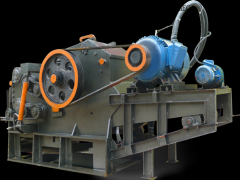Russian Wood Pellet Market
1. Biomass pellet market drives and hurdles in Russia
Russia is one of the largest producers and energy exporter in the world. According to IEA Statistics in 2008, total energy production reached approximately 52.4 EJ (total primary energy supply in 2008 was around 28.7 EJ). According to different sources, renewable energy represents around 1% of the totally produced energy. Undeveloped infrastructure, low-density of population and relatively low prices for fossil sources of energy (gas, oil and coal) are reasons for low utilization of renewable energy. In Russia, the use of renewable energy sources (excluding large hydropower, > 25 MWe) is negligible. Annually, with the use of renewable energy sources Russia produces no more than 8.5 TWh of electrical energy (excluding hydropower stations with installed capacity of over 25 MW). The installed electricity production capacity from renewable energy sources is less than 2,200 MW (excluding large hydropower stations).
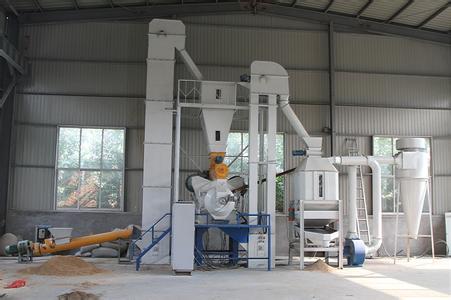
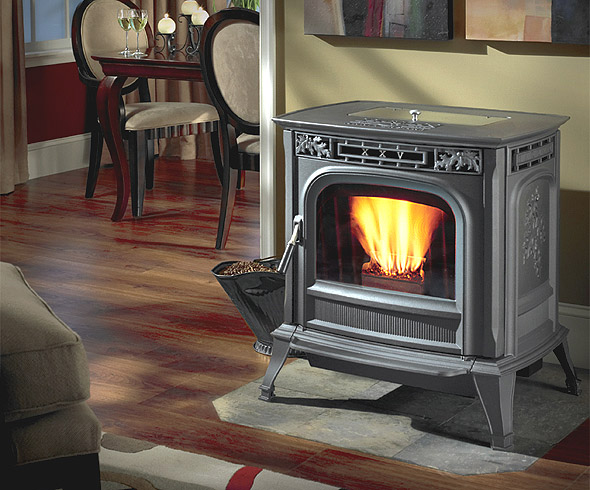
Biomass/biogas (61.8 % of total electricity production) around 5.2 TWh and small hydro power (33.3 % of total electricity production) around 2.8 TWh are the most important renewable sources of electricity in Russia. Almost the same situation is with heat power generation; only 3% (˜0.25 EJ in 2008) of common heat is generated with renewable energy and bioenergy sources usage. It is worth noting that the major part of the heat power produced with renewable energy sources is manufactured at private (decentralized) boiler stations. By the end of 2008, the municipal (centralized) boiler-stations produced 0.02 EJ of heat power with renewable energy using. This figure illustrates distribution of heat energy generation by different renewable sources. Generally, utilization of renewable energy in Russia is still in the initial phase.
READ: GERMANY PELLET FUEL MARKET
Referring to a number of studies, most perspective directions for Russian renewable energy development would be wood based bioenergy pellets, small hydro stations and wind power. Also the tidal power development is very promising. The government resolution established a goal to increase the share of renewable sources for electricity energy production in Russia (exclude large hydropower > 25 MW) to 1.5 percent in 2010, 2.5 percent in 2015 and 4.5 percent in 2020 respectively, which represents approximately 0.3 EJ (80 billion kWh). Production of thermal energy generated from renewable sources will increase from current ˜0.25 EJ to ˜0.5 EJ in 2020. Electricity production generated at hydro power stations with capacity over 25 MWth will go up from ˜0.6 EJ (168 billion kWh) in 2010 to ˜1.02 EJ (284 billion kWh) in 2020.
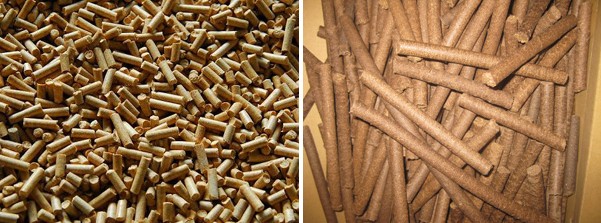
Wood pellet production in Russia is on the increase. Several pellet mill projects have been launched. The largest already-built project is the “Vyborg Cellulose” (Leningrad oblast) which was launched in several stages. The full capacity will be reached in 1-1.5 years. The plant will use 2.5-3 million cubic meters of timber annually. The company has already received a number of leased forest lands in the Northwest Federal District. Also the possibility of using timber from the flooded woods due to creating hydropower reservations is considered. Furthermore, the enterprise is building its own terminal for pellet shipment. According to the project, the terminal will allow loading simultaneously two vessels with the volume from 3,000 tons to 8,000 tons each; the length of the quay wall will be over 300m. The terminal will be able to transport the plant’s own export (1 million tons per year). The production started in the first quarter of 2011. Nowadays, Russian pellet producers reconsidered the approach to the capacity of new pellet plants. While previously main focus in pellet plants organization was on small-capacity mills, today most installed plants have capacity around 50,000 tons per year. Around 50 new plants are expected to be established in few years time.
READ: BIOMASS PELLET MARKET IN SWEDEN
Recently the new project was announced. It involves the group of companies “Region-Russian Wood Pellets”. According to this project, it is planned to build a network of plants in 13 regions in Central and North-West part of Russia with total capacity about 3 million tons of pellets per year. At the first phase, several plants will start in Pskov oblast (the first stage 70,000 tons per year), Novgorod oblast (the first stage 125,000 tons per year), Tver oblast (125,000 tons per year), Kirov oblast (the first phase-125,000 tons per year), and Nizhny Novgorod oblast (100,000 tons per year). Feasibility studies for construction and business plans have been completed, constriction sites chosen already. Main drives for pellet production development in Russia are huge amount of cheap raw material and consequently comparative low production prime cost. In the same way, accrescent demand for wood pellets in European Union is promoting pellet production increase. In addition, pellet production, especially in North-West region, allows delivering big amount of product to consumers with low transport cost, because of geographical closest of this region to EU.
READ: ASIAN PELLET FUEL MARKET ANALYSES
2. Production capacity and feedstock
The first wood pellet manufacturer in Russia, LCC Biofuel was founded in the year 2001 and is located in the Leningrad region. It was a very small enterprise –in fact, it was an experimental workshop, which did not run up to a high level of development. However, this enterprise gave a start to wood pellet industry in Russia. In 2003, five pellet manufactures were operating in Russia. They were equipped with second-hand equipment and their total production was near 8 thousand tons a year. In 2006, there were about 50 pellets manufactures, which did not have good and high-quality equipment. Currently there are about 150 wood pellet mills, with a total installed annual production capacity of about 1.9 million tons. Unfortunately, many of them are off-line or produce a negligible quantity of pellets, which does not affect statistics. Trade sources report that construction of additional 50 wood pellet facilities is likely to occur in the near future. In 2009 year nine leading manufactures produced 75% of overall production.
Presently main producers and exporters of wood pellets in Russia are the two plants: DOK Yenisei (Krasnoyarsk Kray) and Lesozavod 25 (Arkhangelsk oblast). They are closely followed by the plant“Taleon Terra”(Tver oblast), “Biogran” (Karelia), “Green Power” (Leningrad oblast), “Setles” (Karelia),“Meidger” (Vologda oblast), and “Mir granul”(Leningrad oblast). Also on the list of major exporters there was “Vologdabioexport "(Vologda oblast) which was reported on preservation at the end of 2010. Considering the fact that Russian manufacturers are working for export and Europe's need for pellets is growing, one can assume that production of pellets will increase. Presently, not all pellet plants in Russia are in full operation. As it is mentioned above, the majority of pellet plants are located in North-West Federal District. According to statistics, this region is a leader in pellet production. Based on official production numbers, Archangelsk oblast is the leader in North-West Federal District; it is followed by one of the largest pellet plants in Russia, “Lesozavod 25” in Leningrad oblast. In a little while in Leningrad oblast the biggest plant in the world “Vyborg Cellulose” will be launched which establishes North-West District leadership in pellet production. Next to North-West Federal District’s comes Siberian Federal District. The largest mills here are “DOK Yenisei” and “Novoeniseysky LPH”.
READ: HOW TO START BIOMASS PELLET PLANT
Russia boasts the title of wood-richest country in the world, covering forest area around 800 million hectares. It constitutes around 20% of global forest resources. The majority of forest industry in the country is located in European part of Russia, where most of the timber has been already cut. The main timber resources are located beyond the Urals, where timber-processing industries are very weakly developed, except for some regions. The utilization rate of Russian forests is low. Forestry enterprises use less than one quarter of harvesting potential of timber cutting funds; according to various sources, the implementation level of the economic potential in the industry ranges from 7 to 10%. One of the main problems is the lack of wood-transporting roads.
It is proved that logging becomes unprofitable if the haul distance on wood-transport roads is more than 50 km. Low density of railroads and public roads in Russia makes millions of cubic meters of timber inaccessible. Today there is only 1.2 km of forestry roads per 1,000 ha forest land.
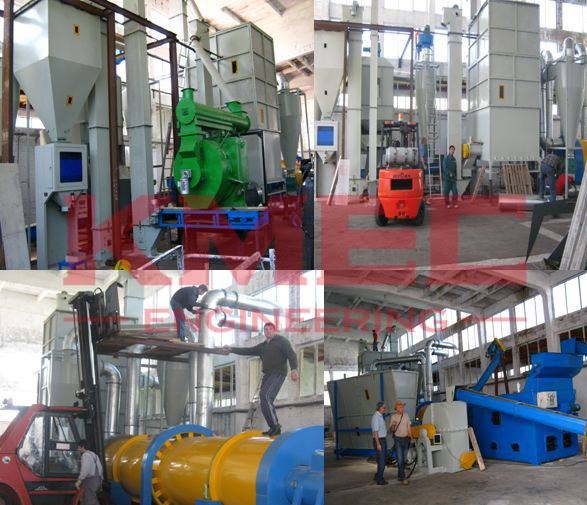
The potential for biofuel raw material from waste timber in Russia is very high. According to the Federal Forestry Agency, annual forest waste in Russia composes at least 100 million cubic meters (loose). From this raw material potential, it is possible to produce around 20 million tons of pellets (at the rate 5 cubic meters for 1 ton of pellets). Sawdust cost depends from some factors like moisture content, species of wood and region. Approximate cost is 3.75-7.5 euro (150-300 RUR) per one cubic meter. So, to produce tone of pellets it is necessary to use 5-7 cubic meters of sawdust. Consequently, raw material expenses will be around 22.5-45 euro per ton of pellets.
The Northwest contains 60% of forests in the European part of the Russian Federation; 17% of all Russian timber is concentrated in this region. Approximately half of the pellet mills are located in the Northwest region. The undeniable advantages of placing pellet manufacture in the Northwest are: presence of rich wood resources, closeness to the main European commodity markets and seaports. Wood resources of the Russian Federation are presented in the three basic categories:
Coniferous (pine, cedar, spruce, fir, larch) (71%).
Soft-wooded (birch, aspen, linden, poplar) (17%).
Hard-wooded (birch stone, oak, beech, ash-tree) (2%).
READ: WOOD PELLET MARKET IN THE USA
3. Trade and logistic aspects
The wood pellet production in 2009 was around 900 thousand tones. The major part of Russian pellets is exported to EU countries. Export data are different in various sources. According to Eurostat, in 2009 Russia exported 380,000 tons of pellets and 310,000 tons of briquettes to EU countries. According to other research agencies and experts, export in 2009 was approximately 500,000-600,000 tones. The internal wood pellet consumption is growing; recent data from different sources range from 100,000 to 250,000 tones annually. Major internal consumers are private customers, but recently some municipal boiler-houses have been transferred from gas to pellets.
According to experts, export volume in 2010 was around 500 thousand tones. Actually, in 2010 two major pellet plants DOK “Yenisei” and “Lesozavod 25” manufactured and exported almost half of total exported volume. All Russian pellet producers work through traders. The main buyers of Russian pellets are:
S. Syr. Pedersen AS - Norwegian trader
Lantmannen Agroenergi - a Swedish company, manufacturer and trader
The major part (more than 50 %) of Russian pellets is exported from the North-West Federal District. The main harbors for pellet export are St.Petetsburg, Ust-Luga, Petrozhavodsk. Some pellets are exported though Baltic ports: Tallinn (Estonia), Sillamae (Estonia), Klaipeda (Lithiania), Liepaya, Vetspils (Latvia), and Paldiski (Estonia). One of the main problems hampering growth of pellets production in Russia is the lack of specialized cargo handling capacity and consequently, a high cost of transshipment. The cost of pellet transshipment is different. For example, in Podporozhie port, it costs 5 € per ton, in Ust-Luga (December 2009) 9 € per ton, in the St. Petersburg Port about 12-13 € per ton.
READ: BIOMASS PELLET MARKET IN BELGIUM
4. Pellets quality and standard
Presently, there is no standard for pellet production in Russia. Since major part of Russian pellets is exported to EU countries, Russian producers are guided by the standards of the importing countries. Until recently, the main standard was DINplus. But in 2010 pan-European pellets standard ENplus 14961-2 was introduced. This standard is important for private consumers of pellets, but the major part of Russia’s traders and consumers (Denmark, Sweden, and Belgium) use industrial pellets, which should have EN-B standard certification.
READ: WOOD PELLET MARKET IN DANMARK
5. Price trends
Wood pellet prices are liable to variation. The average prime cost is 50-60 € per ton. Export prices vary from 170 to 190 € per ton (on FOB condition).
------------------------------------------------------------------------------------------------------------------------------------------
News
- Small Pellet Machine Manufacturer-Kingman
- Application of Wood Pellets and Use of Biomass Pellets
- From Fossil Fuel into Biomass Pellet Fuel
- Biomass Pellet Making Machines Market
- Applying of pellet stoves for home use
- Highland pellets to build $130 million facility in arkansas
- How to deal with the blocked hammer mill
- How to Make Wood Pellets with Sawdust
- The government policy promotes the development of biomass fuel
- Market analysis of biomass pellet fuel
- Strategic positioning of renewable energy
- Biomass energy has pass through the pre assessment
- The key point of deep processing of biomass pellet
- Harbin is promoting the development of biomass machinery
- The development of biomass formation technology I
- The development of biomass formation technology II
- Biomass energy industry is now going full tilt in 2015
- Rapid increasing demand of sawdust pellet on the market
- Pellet fuel market in EU
- Chinese Biomass Energy Conference held in Beijing
- Future market development of straw pellet mill
- Peanut Shell Pellet Mill Makes High Quality Pellets
- The utilization of straw is only 5%, biomass energy needs our attention!
- Corn straw pellet machine relieves the tight supply of fuel energy
- Reasons for loose or not forming of biomass pellet mill

